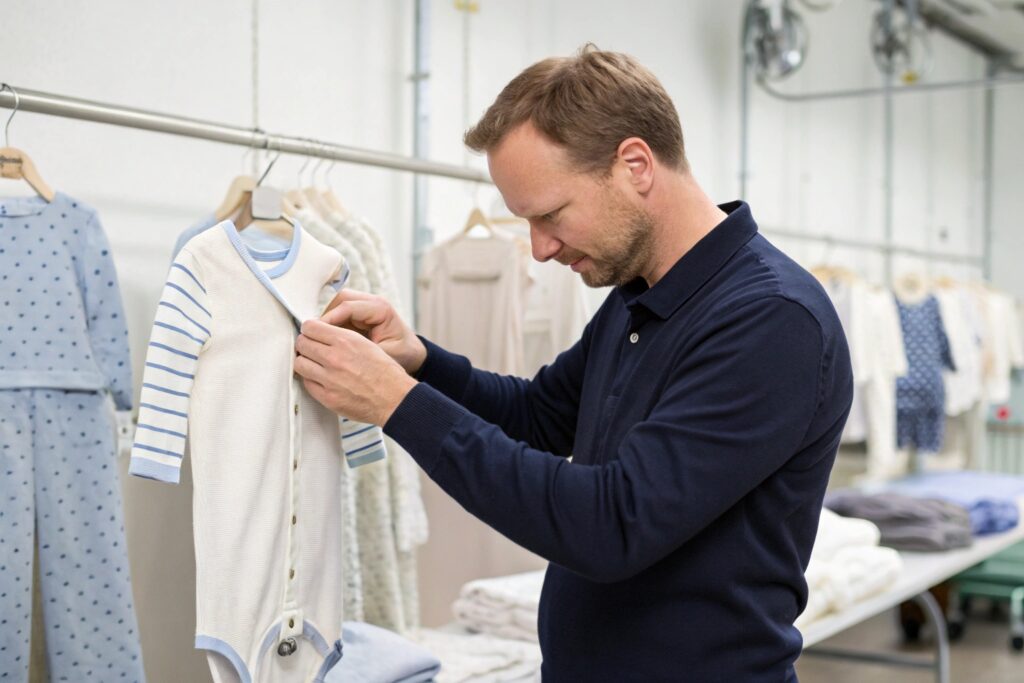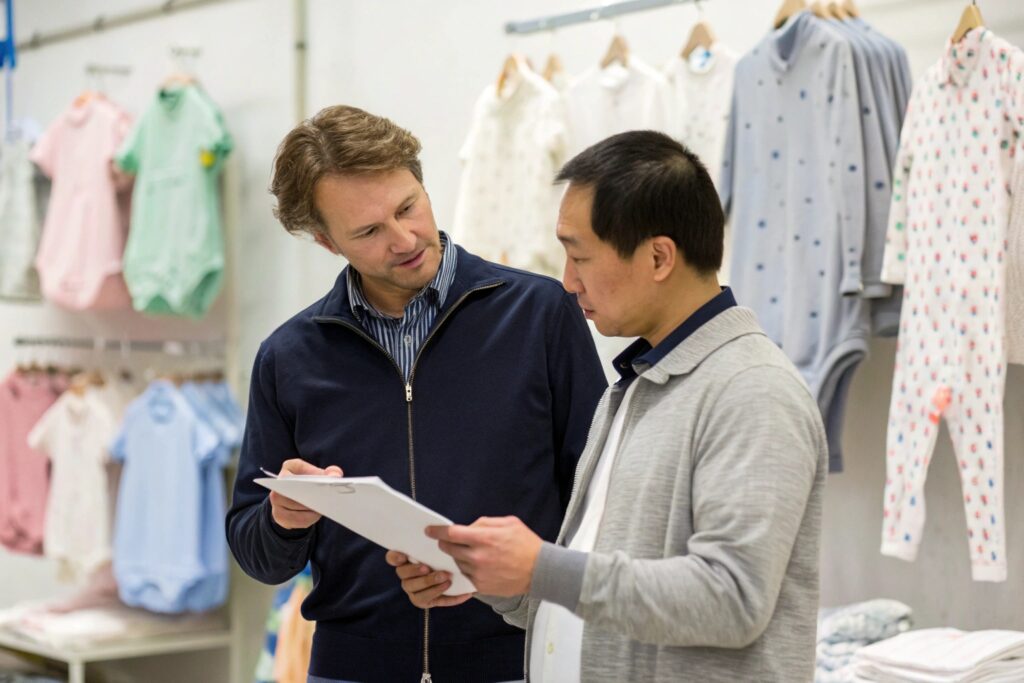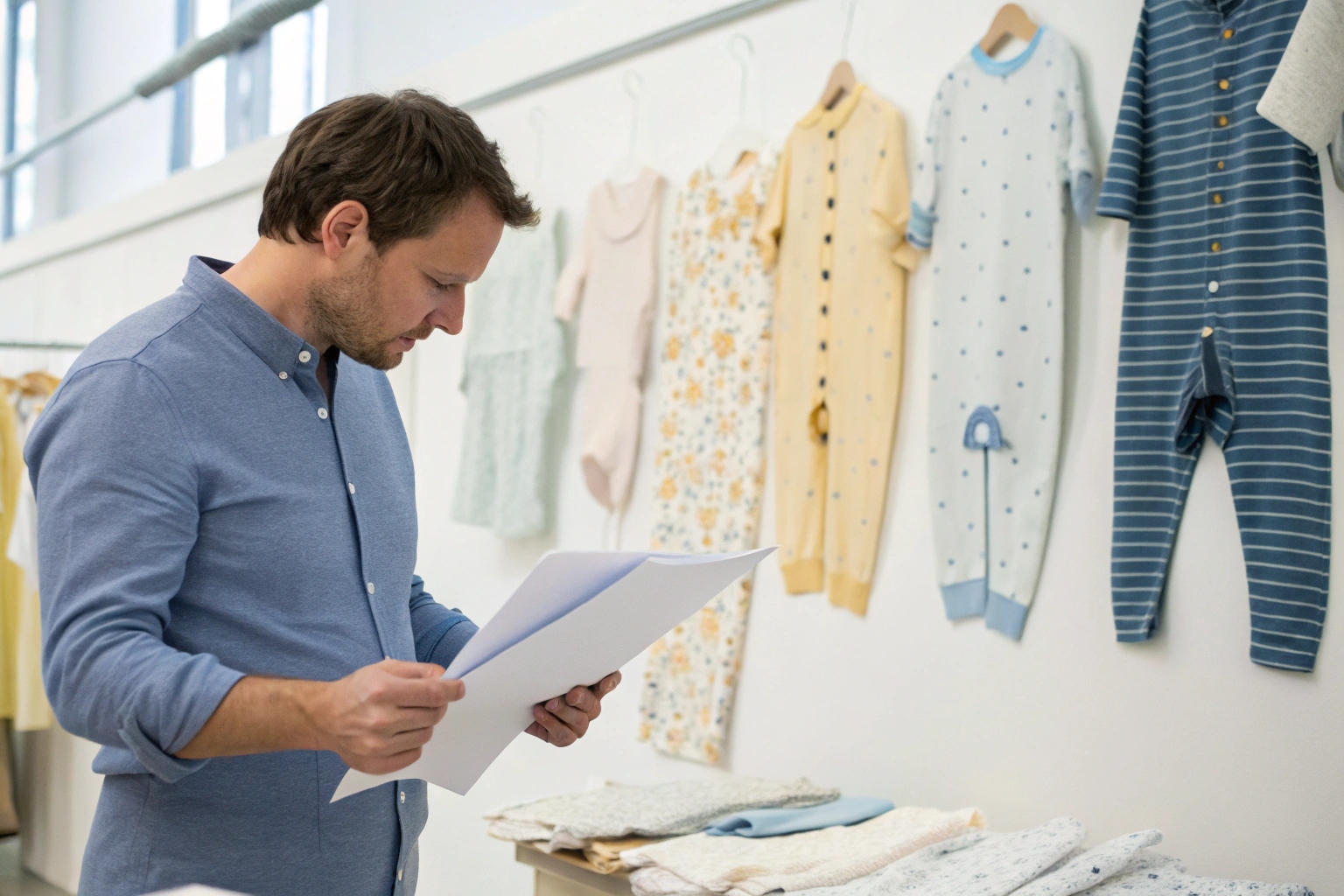Finding the right manufacturer is one of the most critical decisions for any children’s clothing brand. The wrong supplier can delay launches, damage your reputation, or cost you thousands in wasted inventory.
The best way to choose a kidswear manufacturer is to ask the right questions, assess product quality, evaluate experience, and compare production terms carefully.
Let’s break down each step so you can make confident, cost-effective decisions that set your brand up for long-term success.
What Questions to Ask Before Partnering with a Factory?
Before signing anything, you need clarity on more than just price. Asking the right questions will help you avoid communication issues, production delays, or compliance risks down the line.
Ask direct, specific questions that uncover the manufacturer’s true capabilities, experience, flexibility, and reliability.

Key questions to ask your potential kidswear supplier:
| Area | What to Ask |
|---|---|
| Experience | How many years have you produced children’s clothing? |
| Production Capability | What is your monthly output for baby or kidswear? |
| Certifications | Are you GOTS, OEKO-TEX, BSCI, or Sedex certified? |
| Customization | Do you support custom prints, embroidery, and private labels? |
| MOQ Flexibility | What is your minimum order quantity per style/size/color? |
| Sampling | How long do you take to produce a sample? |
| Shipping | Do you support DDP delivery, and which freight forwarders do you work with? |
If a factory can’t clearly answer these, they may not be ready for global B2B partnerships.
How to Evaluate Product Quality and Compliance Standards?
The softness of a romper and the strength of a snap matter more than you think—especially for babywear. Your factory’s quality is your reputation.
Assessing product quality and compliance ensures your clothing meets customer expectations and passes safety standards in your target markets.

How to check product quality:
- Request production samples before placing a bulk order
- Inspect seams, stitching, and trims for consistency and durability
- Check fabric hand-feel (especially for infant items)
- Test washability – colors shouldn’t fade, shrink, or distort
- Review internal tags, labels, and finishings
- Confirm size accuracy across baby/kid ranges
Certifications and safety compliance to look for:
| Standard | Purpose |
|---|---|
| OEKO-TEX® | Free from harmful substances in textiles |
| GOTS | Organic certification from seed to finished good |
| EN 14682 / ASTM | Drawstring and safety compliance (EU/US) |
| CPSIA / REACH | Consumer product safety laws for babywear |
| BSCI / Sedex | Ethical labor and manufacturing compliance |
Ask for lab reports or past audit summaries to verify claims. Don’t assume—inspect.
Why Experience in Kidswear Matters for Manufacturers?
Children’s clothing isn’t just “smaller adult clothing.” It has stricter standards, faster sizing shifts, and different customer expectations.
An experienced kidswear manufacturer understands size grading, child-safe design, fabric compliance, and fast seasonal turnarounds—making your production smoother and more efficient.

What does real experience look like?
- Factory has produced for babywear or children’s brands before
- Familiar with international sizing (US, EU, UK standards)
- Understands safety risks (choking hazards, seam irritation, drawstring laws)
- Suggests age-appropriate trims and construction improvements
- Can support small runs for fast-growing sizes (0–3M, 3–6M, etc.)
| Experienced vs Inexperienced Factory |
|---|
| Uses baby-safe zippers/snaps |
| Knows to avoid harsh dyes/fabrics |
| Offers advice on shrinkage or wash test |
| Already supplies to retailers or DTC babywear brands |
Choosing a general garment factory may save costs upfront—but often leads to fit issues, return problems, and compliance headaches later on.
Tips for Comparing MOQ, Lead Times, and Pricing?
You don’t just need a supplier—you need the right match for your order size, product complexity, and growth strategy.
Balancing MOQ, lead time, and price ensures you avoid overstock, cash flow issues, and missed sales windows.

How to compare key metrics between factories:
| Factor | What to Consider |
|---|---|
| MOQ (Minimum Order Quantity) | Start small if testing designs (e.g. 200–300 pcs per style) |
| Lead Time | Ask for standard vs peak season timelines |
| Unit Cost | Factor in trims, packaging, and embroidery |
| Sampling Cost | Some offer free samples; others charge per item |
| Reorder Timeline | Can they restock quickly if you sell out early? |
Tips for smart comparison:
- Get quotes on the same spec sheet (same quantity, size breakdown, print, etc.)
- Check what’s included in the price: Is fabric, printing, labeling, and packaging included?
- Ask about payment terms (e.g. 30% upfront, 70% before shipment)
- Choose a supplier who offers scalability if you plan to grow
A slightly higher price may be worth it for reliability, communication, and export experience.
Conclusion
Choosing the right kidswear manufacturer isn’t just about cost—it’s about alignment. Ask smart questions, check quality, prioritize experience, and compare terms wisely. The best supplier is the one who helps your brand grow with confidence, consistency, and care for your customer’s most precious people.










